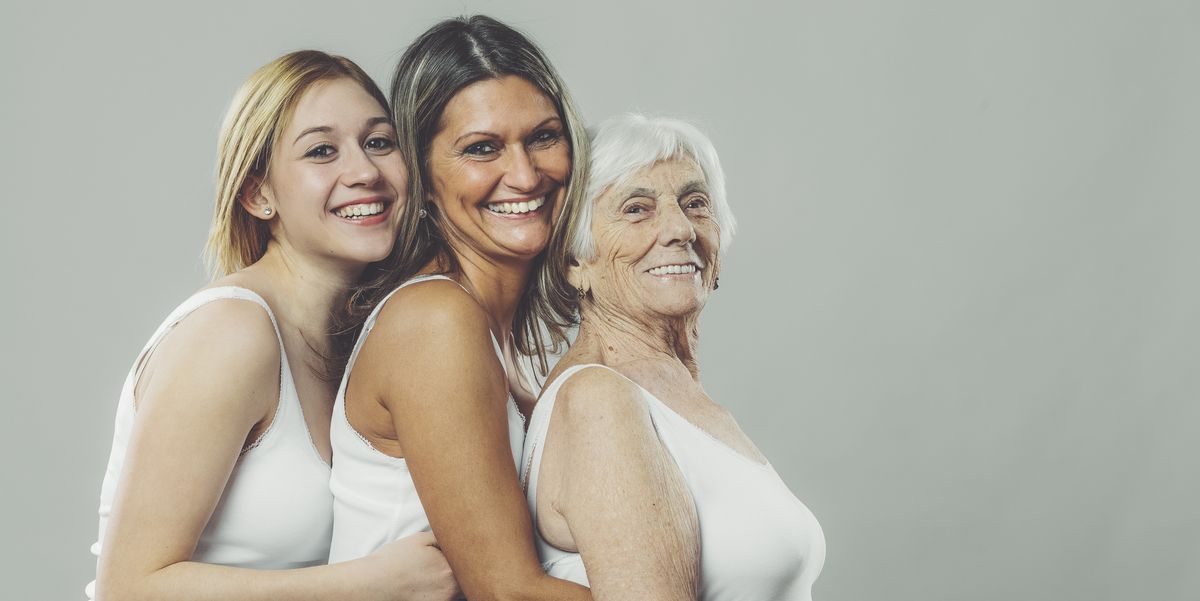
EXACTLY HOW TO LOOK YOUR BEST IN YOUR 40S, 50S, 60S, AND BEYOND—ACCORDING TO EXPERTS
Time has a way of changing just about everything—including our complexions. In our 20s and 30s, our skin’s needs are very different than they are in our 50s and 60s. And while the thought of switching up your routine—and sifting through all the skincare products promising to be the fountain of youth!—might be overwhelming, there are a few simple rules you can follow to maintain healthy skin through the years.
“It’s good to understand the skin’s natural aging process and what ingredients can help maintain and boost your skin’s best natural glow through each decade,” explains Nazanin Saedi, M.D., F.A.A.D., a board-certified laser surgery and cosmetic dermatologist. “The earlier you begin to care for your skin, the longer you can hold off the inevitable signs of aging.”
There’s a natural progression of treatment for skin, starting with prevention and moving to rejuvenation, then minimizing the visual effects of aging, like fine lines and wrinkles. As you age, you’ll build and add to your routine as you face different skin concerns. Read on to simplify the task of choosing skincare products with picks tailored for your decade.
In your 30s
Prevention
By age 30, experts recommend that you begin to build the foundation of your skincare routine to maintain overall skin health and prevent concerns that often arise later in life, including skin cancer, as well as fine lines and wrinkles, dryness, and loss of firmness.
The best way to avoid or put off these concerns is to wear sunscreen every day to protect against UV damage (the main cause of both skin cancer and visible signs of aging), Dr. Saedi says. Now is also the time to introduce a retinol or a retinoid to your routine. These vitamin A derivatives “will help increase cell turnover and collagen production,” effectively “slowing down the aging process” by preventing and reversing fine lines, wrinkles, and discoloration, Dr. Saedi adds.
In your 40s
Rejuvenation
As you enter your 40s, be sure to continue the good skincare practices and use of sunscreen and retinol you practiced in your 30s. But if you haven’t adopted these practices, know that “it’s never too late to start,” explains Karan Lal, D.O., F.A.A.D., a double board-certified dermatologist based in Scottsdale, AZ. By this decade, people often have concerns that go beyond basic skin health. “Our 40s are when we usually first notice the ‘sag,’ or the loss of firmness and elasticity in the skin, due to the drop in collagen production,” says Dr. Lal.
“This is a good time to start using products with growth factors to help rejuvenate and renew the skin.” Growth factors are proteins that help support collagen production, which can help firm as well as tighten skin. Look for “oligopeptides” or “human-derived fibroblast media” on the ingredient labels of growth-factor products to ensure that you are choosing the most effective formula.
In your 50s
Repairing
New skin issues that appear in your 50s are dullness, age spots, and hyperpigmentation, says Dr. Lal. Good news: A quality vitamin C product will address all these concerns while contributing to a brighter complexion.
Vitamin C is a powerful antioxidant that “fights free radical damage and hyperpigmentation and is overall very reparative for the skin,” Dr. Lal says. These products tend to be most potent and stable in serum form, especially when combined with ingredients like vitamin E and ferulic acid. For best results, continue to use growth factors while introducing vitamin C. If you’d like to simplify your skincare routine, use vitamin C during the day and growth factors at night.
During these years, skin also tends to skew more toward the sensitive end of the spectrum for many women due to slower estrogen production, Dr. Saedi adds. So focusing on gentle products and ingredients that work for you (while not being afraid of a bit of trial and error) is key during this time as well.
In your 60s and beyond
Hydration
After the age of 60, skin is less efficient at retaining moisture and tends to appear drier because of lower estrogen levels. “Over time, your oil glands will produce less oil. This oil, called sebum, helps protect and moisturize your skin,” explains Dr. Saedi, who recommends focusing on hydration at this age.
For optimal skin hydration and a boost of moisture, look for products that contain hyaluronic acid. This powerhouse ingredient “helps hydrate your skin by attracting water into it,” Dr. Lal says. “It’s going to give your skin that plump, youthful look.”
Try 200+ at home workout videos from Men’s Health, Women’s Health, Prevention, and more on All Out Studio free for 14 days!
2023-11-25T12:43:36Z dg43tfdfdgfd